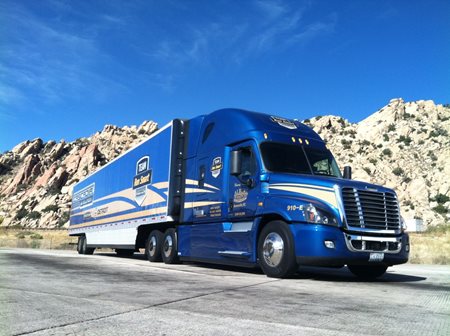Owner-operators often report higher revenues, better performance, and greater compliance by
running their own trailers. When it comes to spec’ing a trailer, however, you’ve got to study up. Your trailer choices will affect your profitability—and possibly your federal Compliance, Safety, Accountability (CSA) score—so it’s wise to use a vetted checklist of needs to make the right choice.
It’s a complex process requiring a lot of inquiry and shopping around, so take your time. In the simplest terms, spec’ing a trailer revolves around application requirements and operating boundaries. This can be further simplified: what loads will you typically be hauling, and where will you be hauling them?

In their article,
Pulling Profits: The Pros and Cons of Trailer Ownership, Overdrive Online offers some excellent tips for spec’ing trailers, including these:
-
Make sure the specs fit the application: Look at the floor rating to determine if it works with the weight you are hauling. You also may need additional equipment that protects both tractor and trailer. The more frequently you load and unload, the higher your maintenance costs.
-
Consider versatility: If you choose a reefer, you have access to a larger pool of freight and often the potential for higher revenue; on the other hand, maintenance will be more expensive. Certain types of open-deck trailers accommodate more varieties of freight than others.
-
Be aware of California requirements: If your business takes you to all 48 states and/or Canada, pay special attention to size, model, style and axle and suspension configuration. California has current and pending specific Air Resources Board regulations that pertain to trailers, such as SmartWay equipment requirements, age of trailer and mandates such as the distance from the kingpin to the rear axle. Also in California, refrigeration units must pass emissions testing, while van trailers must have certain aerodynamic equipment.
-
Minimize maintenance: Spec for long-life components such as brake linings, wheel ends and coatings that reduce corrosion. Look for systems that eliminate wearable parts, such as puncture-guard trailer liners and axles integrated with the trailer beam.
-
Choose lighter equipment: A trailer built with weight-saving materials allows for extra payload. Even if you cube out, a lighter trailer cuts fuel costs. For every 300 pounds eliminated, the fuel savings is 0.2 percent.
As an investment, trailers hold up well. Generally speaking, a well-maintained trailer can last 15 or more years. Considering the lower upfront capital requirements and spec packages available on the used market, it can be a great option for many operators.
Some applications are dictated by industry segment, from fracking to oil to automotive. Trailers specially outfitted for these uses tend to be in high demand. Along with specialty applications are a dizzying assortment of features from load securing systems, to spring suspension or air ride suspension, numerous door configurations favoring specific uses, heavy-duty duct floors and insulation for temperature control, and various flatbed constructions (lighter aluminum, steel) to reduce weight for better fuel economy while increasing payload capacity. Aerodynamic qualities are also a big factor in spec’ing trailers; as is everything from choice of tires to protective materials to reduce wear.
Again, it’s complicated. Spec’ing the right trailer for the job isn’t a beauty contest. It’s the result of a detailed evaluation of your needs—and a focused search for truck features that fit the bill. But, in the end, that footwork pays off in more profitable years of service and a higher resale value in the end.
This article was originally featured on
Ryder.com.